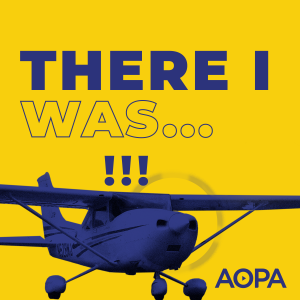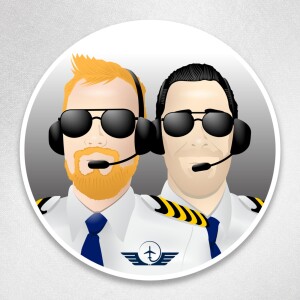

Rotary Wing Show – Helicopter News, Safety, Training & Pilot Stories
https://feeds.captivate.fm/helicopternewstalk/Episode List
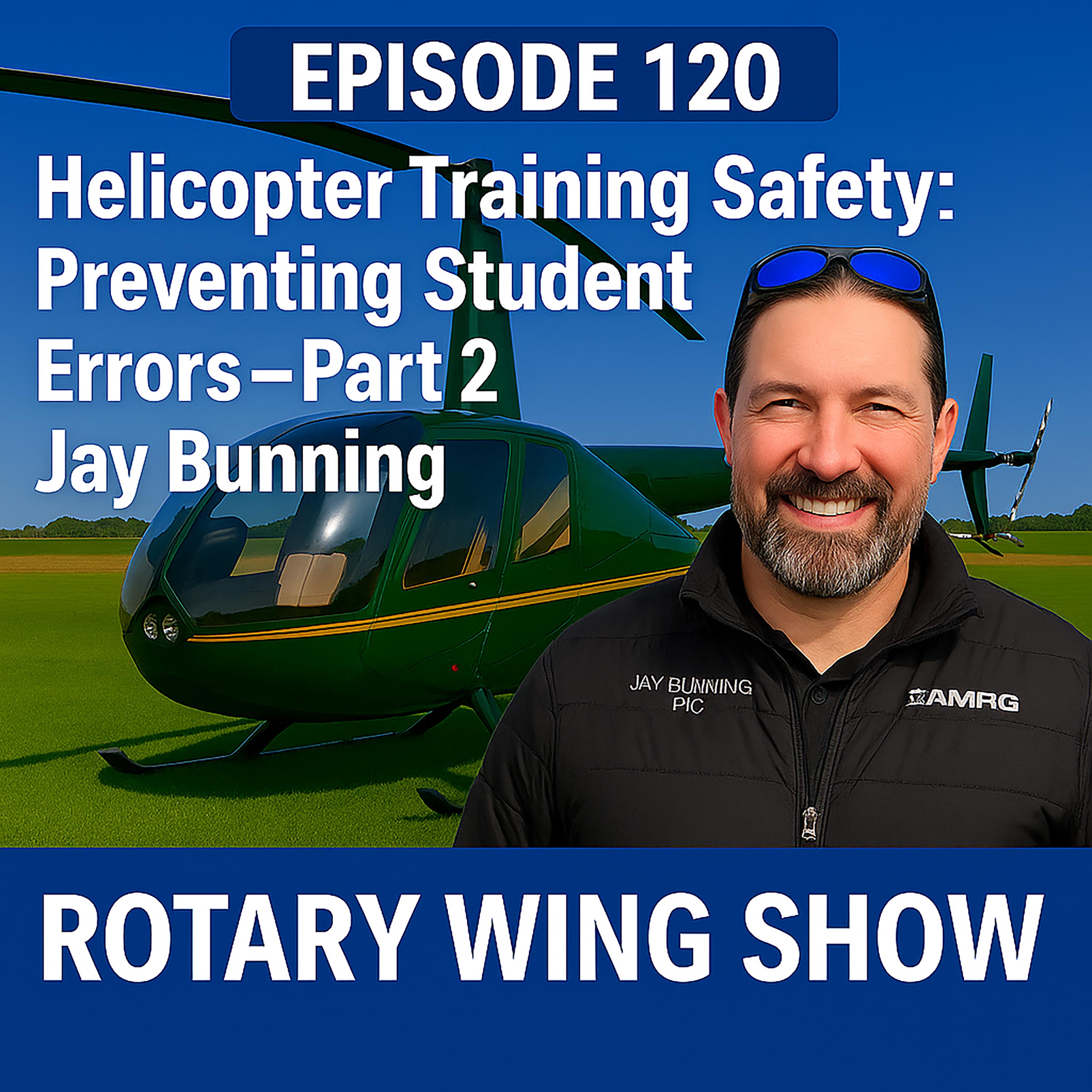
Helicopter Training Safety: Preventing Student Errors with Jay Bunning – Part 2
Max talks with Jay Bunning, CFI and creator of helicoptertrainingvideos.com, for Part 2 of their series on Helicopter Training Safety: Preventing Student Errors. Following up from Part 1, Jay brings real-world accident examples and practical strategies for instructors to manage common mistakes during training flights.We need your help to improve the show! To do that, we need you to take our Rotary Wing Show Listener Survey. We have a new host and the show may change in some ways, and to guide those changes we need your feedback. So please take a few minutes and fill in the survey now. Also, have you ever have you ever thought that you might like to have Internet service available when you’re flying in either a helicopter or a GA aircraft? To learn everything you need to know about how to set up and use Starlink in a small aircraft listen to episode 400 of the Aviation News Talk podcast. And click here to find the bits and pieces you need to make Starlink work.Quick Stops / Rapid DecelerationsJay begins with rapid deceleration or quick stop maneuvers, which require simultaneous control of cyclic, collective, and pedals. He explains why instructors must guard both pedals closely, since students often apply the wrong pedal or fail to add left pedal when raising collective. Improper collective inputs can also create conditions for vortex ring state (VRS), overspeed, or altitude loss. Jay notes the importance of sequencing training—avoiding quick stops immediately after autorotations to prevent negative transfer, since students sometimes confuse the two and roll off throttle. He also highlights an R44 accident where a CFI invented a non-standard rapid decel procedure that ended in rollover—reinforcing why instructors must stick to manufacturer guidanceVortex Ring State (VRS)The conversation moves to vortex ring state, also known as “settling with power.” Jay explains both the traditional recovery—lowering collective and pushing forward cyclic to gain airspeed—and the Vard (lateral) recovery, which uses collective, left pedal, and right cyclic to slide out of the recirculation. While the Vard technique can recover faster, Jay cautions against prolonged drifting, over-banking, or excessive collective input, which can cause yaw or RPM decay. He stresses training students to recognize the first indications of VRS—unusual vibrations, buffeting, or an increasing descent rate—and recover immediately. Riding a helicopter deep into VRS for demonstration purposes has caused accidents, including the in-flight breakup of an AS350 during training. Both Airbus and Robinson have issued safety advisories warning against prolonged or aggressive inputs during VRS demonstrationsHover AutosFinally, Jay addresses hover autorotations, calling them the most complex maneuver for instructors to teach. The challenge lies in managing throttle, pedals, cyclic, and collective inputs—all in under two seconds, especially in the R22. Instructors must guard against incorrect pedal use, premature collective pulls that balloon the aircraft, or students rolling throttle the wrong way. Jay explains how training should progress gradually, starting with throttle roll-offs on the ground, then introducing forward taxi hover autos before moving to stationary hovers. He also cites an R22 dynamic rollover accident caused by gusty winds and improper cyclic control, reinforcing the need to practice only in stable conditions.Key TakeawaysThroughout the episode, Jay stresses several safety principles:Sequence maneuvers wisely to avoid negative transfer.Train students to recognize first symptoms and recover early.Stick to proven, manufacturer-recommended procedures.Instructors must “ghost” maneuvers—mentally flying along and guarding controls.Simulators can safely replicate scenarios like VRS close to the ground.This second part of Max’s conversation with Jay offers valuable insights for CFIs and students alike. By anticipating common errors and adopting safer training practices, instructors can reduce risk and help prevent accidents that still appear far too often in helicopter operations
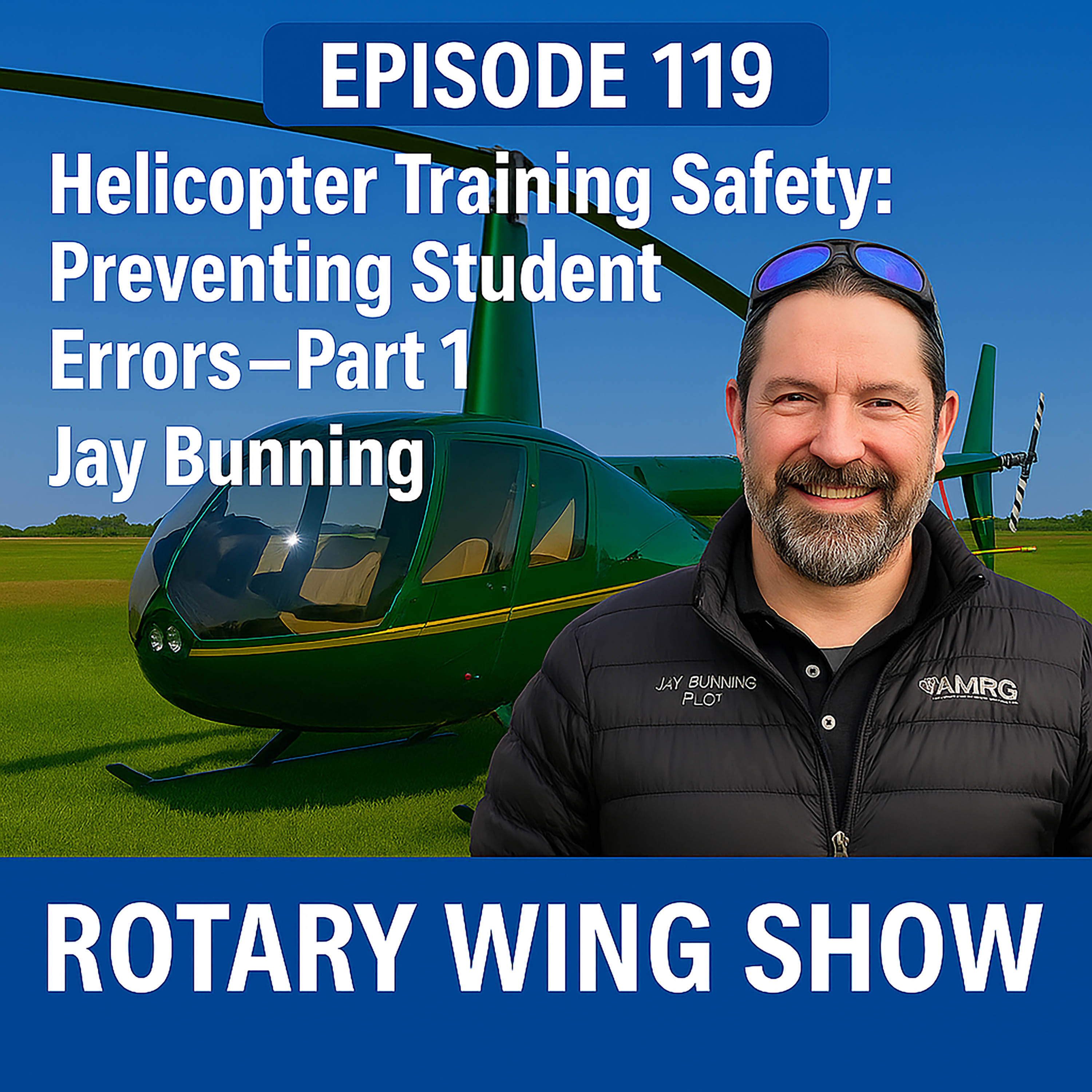
Helicopter Training Safety: Preventing Student Errors with Jay Bunning – Part 1
Max welcomes Jay Bunning, flight instructor, FAA Safety Team representative, and founder of HelicopterTrainingVideos.com, for Part 1 of a two-part discussion on helicopter training safety and preventing dangerous student errors.Mentioned on the ShowPlease Take our Listener Survey to help guide the future of the showEnter a giveaway to win a copy of Keep Your RPM in the GreenBuilding a Safer Training ProgramJay describes how accident reports, maintenance events, and safety management systems (SMS) have shaped the “Dangerous Student Errors” training program at his flight school. By cataloging and simulating common hazards, new instructors can practice recognizing and intervening before student mistakes lead to costly accidents.Guarding the ControlsA central theme is how CFIs should properly “guard” helicopter controls:Pedals: using a right-leg brace to block incorrect yaw inputs.Collective: keeping a loose monitoring hand to sense movement.Throttle: using different grip levels, from light monitoring to strong “death grip,” depending on the maneuver.Cyclic: applying a color-coded green, yellow, and red system for levels of guarding.Jay explains that instructors must strike a balance—being ready to intervene instantly, but still allowing students to feel and learn from the aircraft.Ghosting Maneuvers & Freezing on ControlsJay introduces ghosting maneuvers, a technique where instructors mentally fly the maneuver simultaneously so they can immediately recognize deviations. He also discusses how to handle students who freeze on the controls, including using leverage, physical prompts, and clear communication.Common Errors in TrainingThe discussion covers some of the riskiest points in instruction:Overspeeds during liftoff caused by tight throttle grips.Pedal mis-inputs during pickups and set-downs, especially on grass.Student frustration and fatigue during hover training.The importance of pre-briefing slope operations and approaches.Jay emphasizes that mistakes are part of learning, but instructors must ensure they stay safe mistakes—not accidents.Resources for Students & CFIsFinally, Jay introduces HelicopterTrainingVideos.com, a free resource with videos, articles, quizzes, and a podcast for helicopter students and instructors. His mission is to make helicopter training safer and more efficient worldwide.This first part of the conversation lays the groundwork for understanding student error patterns and developing CFI techniques to manage them. Part 2 will continue with advanced maneuvers and safety scenarios.
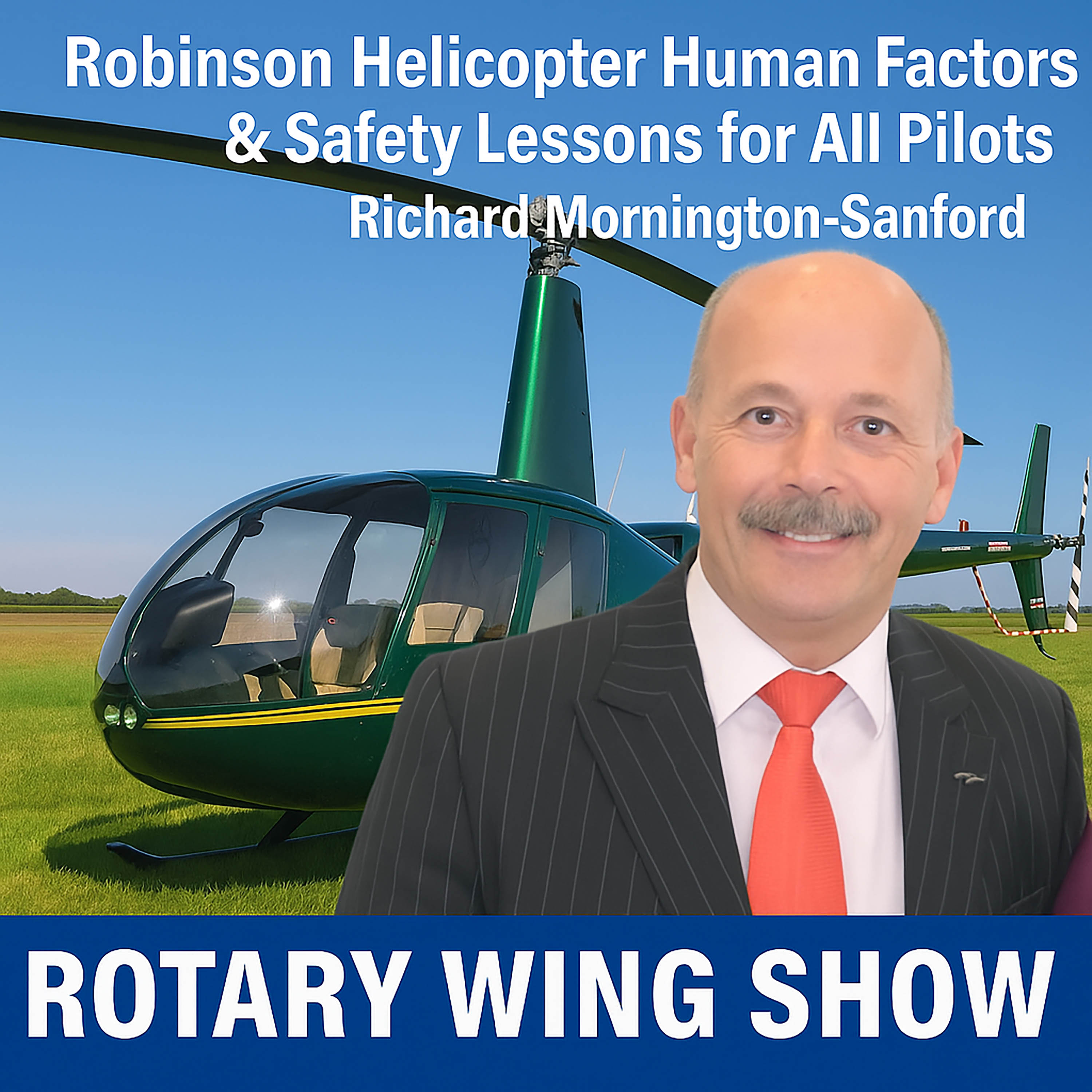
Helicopter Human Factors & Safety Lessons for All Pilots with Richard Mornington-Sanford
Robinson Helicopter Human Factors & Safety Lessons for All Pilots takes a deep dive into the psychology, stress responses, and decision-making processes that shape helicopter safety. Host Max Trescott interviews Richard Mornington-Sanford, a world-renowned instructor, consultant for Robinson Helicopter Company, and author of Keep Your RPM in the Green. Listeners can also enter a giveaway to win a copy of Richard's book, by listening to the show for the link to enter to win. Richard brings decades of experience training pilots on the Robinson R22, R44, and R66, the most widely flown light helicopters in the world. While the discussion focuses on Robinson models, the human factors and safety principles apply to every helicopter pilot.The episode begins with a technical discussion of autorotations: why rolling off the throttle too quickly in a fuel-injected engine can cause a “rich cut” that leads to engine stoppage, and why applying carburetor heat well before reducing power is critical in carbureted Robinson helicopters. Richard contrasts the behavior of the R22 and R44 under carburetor icing, noting how subtle design differences affect pilot workload.From there, Max and Richard explore the psychological traps that pilots fall into. Richard argues that pilots should actively look for a reason not to fly, since optimism, investment bias, and passenger pressure often push them toward risky decisions. Canceling a flight, he stresses, is a skill pilots must practice during training to build confidence in making conservative choices.The conversation highlights the startle effect, in which stress floods the body with adrenaline and cortisol, shutting down rational thought, fine motor skills, and even hearing. Richard recounts a harrowing training flight in Russia where a pilot froze on the controls during a zero-airspeed autorotation. Despite commands, the pilot couldn’t respond—his brain had shut down. Only when the interpreter touched the pilot’s shoulder did he release the controls, saving both lives.Other key safety lessons include:Low RPM emergencies in Robinson helicopters and why training should emphasize manual throttle skills, not just reliance on the governor.The importance of a deteriorating weather trigger—a preplanned visibility minimum that prompts immediate diversion, landing, or return to base.Recognizing how expectation bias can cause pilots to misinterpret what they see on the ground, leading to navigation errors.Why precautionary landings are always safer than pressing into poor conditions, and why regulators support these decisions.Richard also stresses that human limitations are universal: even experienced pilots can freeze under stress or rationalize unsafe flights. By training realistically, practicing emergency procedures, and being honest with passengers about risks, pilots can greatly improve their margin of safety.This episode is essential listening for Robinson R22, R44, and R66 pilots, as well as flight instructors, students, and any rotorcraft pilot who wants to better understand human factors, stress, and risk management in helicopter flying.Please check out these other podcasts in the Aviation News Talk Network:Aviation News TalkNTSB News Talk Podcast UAV News Talk Podcast Richard's websiteBuy Richard's Keep Your RPM in the Green book

9/11 from the Air: NYPD Chief Pilot Ken Solosky Remembers
Max Trescott talks with Ken Solosky, the NYPD's Chief Pilot on 9/11, about his experiences managing helicopter operations on one of the most catastrophic days in American history. Though Ken wasn’t flying at the moment of the attacks, he was on the ground coordinating the NYPD’s aviation response. He recounts how what began as a seemingly routine aircraft accident quickly escalated into a full-blown national emergency. The aviation unit scrambled a standard rescue package—Bell 412s with divers and crew chiefs, and patrol helicopters—only to face total communication breakdowns. Cell service and landlines failed, radio channels were overloaded, and misinformation, including reports of enemy fighter jets, created unprecedented confusion.Ken recalls the surreal moment of watching the second plane hit the South Tower live on TV and initially being unable to process the reality. He explains why rooftop rescues weren’t feasible—smoke obscured visibility, doors were locked or inaccessible, and the risk of engine flameout in the intense heat made the mission too dangerous. Still, he and his team documented the scene extensively and continued daily aerial photography for nearly a year afterward.Ken describes how foreign and domestic aviation units offered immediate support, with helicopters arriving from other cities—even LAPD offering to send their fleet. Yet due to lack of coordination, many of these aircraft were unknown to NYPD at the time and went unused in the response. He speaks candidly about the emotional toll, having lost 10 close friends among the 23 NYPD officers killed, and how that pain continues with the rise in 9/11-related cancer deaths among first responders.Post-9/11, Ken was instrumental in implementing a “96-hour standalone” plan for the NYPD, designed to maintain operations without headquarters support. Staffing schedules were restructured to ensure long-term response capacity. He shares how the aviation unit has evolved over the years—growing from six helicopters to a modern fleet including Bell 429s, a Bell 407 trainer, and a fixed-wing Caravan used for radiation scanning of incoming ships to New York Harbor.Ken also offers a detailed look at what a typical day is like for an NYPD pilot—flying patrol missions, conducting surveillance, responding to foot and vehicle pursuits, and supporting SWAT teams. He explains how the aircraft are equipped with cutting-edge tools like high-def thermal imagers, tactical radios, moving maps, and address-targeting cameras that can zoom in on a license plate from miles away. These tools enable precise coordination with ground teams and real-time intelligence, greatly improving safety and effectiveness.The conversation also delves into pilot recruitment and training, safety management system (SMS) implementation, and Ken’s personal advice for those interested in joining a law enforcement aviation unit. He emphasizes that character and work ethic matter just as much as flight hours.In lighter moments, Ken shares stories of flying Barbara Bush to West Point when Marine One had mechanical issues, and being told by Yankees legend Derek Jeter that flying for the NYPD was cooler than being the Yankees’ shortstop. He also describes dramatic rescues, like locating a man stranded on a sandbar after his friend swam off—and later finding that friend safe on another island.Ken currently flies both a Bell 407 and an Augusta 109 for corporate clients and continues to teach and speak for the FAA and EAA. His legacy and continued contribution to aviation safety and training are evident throughout the episode. The interview is both a sobering reflection on 9/11 and a celebration of how aviation supports public safety in today’s complex world.Mentioned on the Show:Ken Solosky's "Solo Sky" YouTube ChannelAviation News Talk PodcastNTSB News Talk PodcastUAV News Talk Podcast
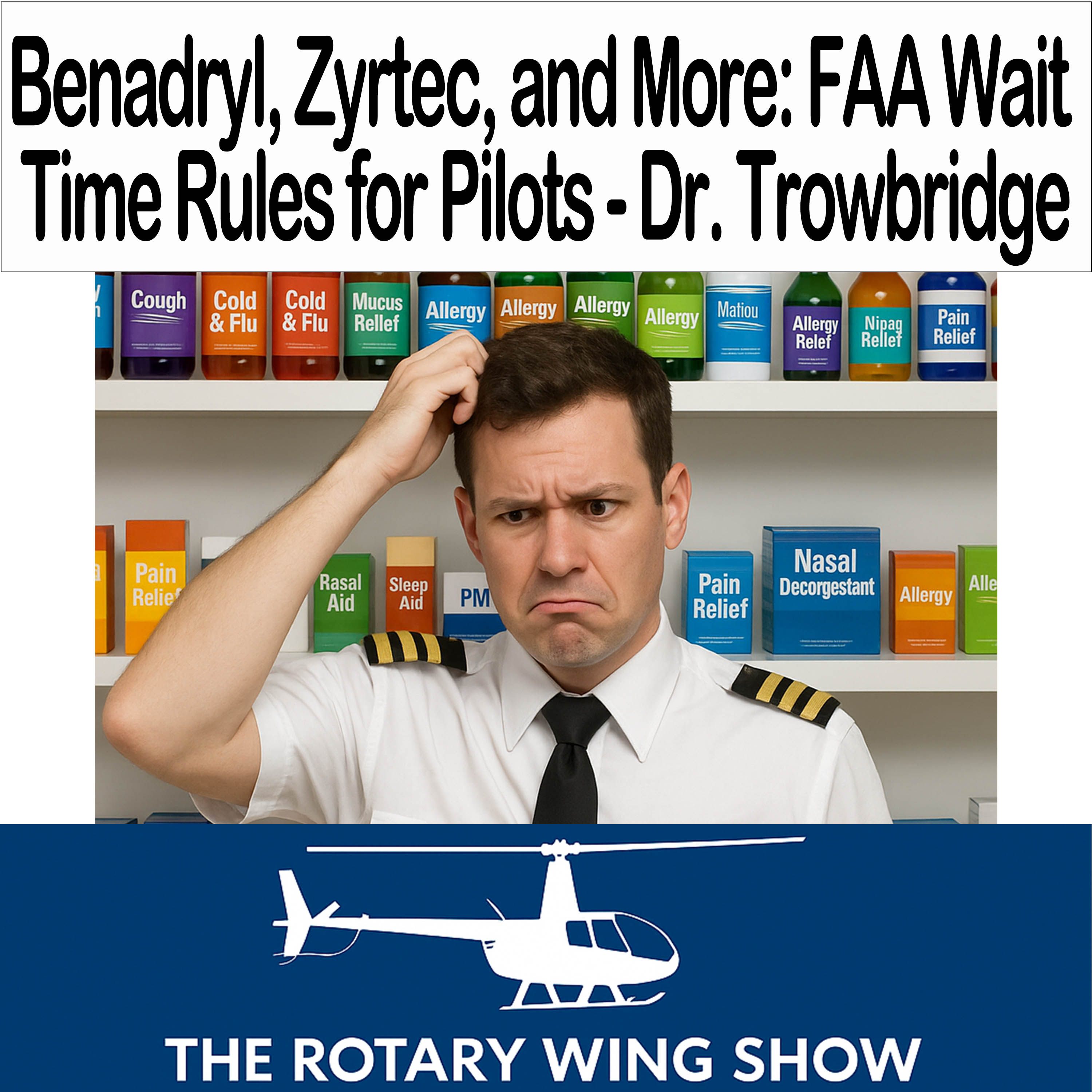
Benadryl, Zyrtec, and Other OTC medicine Wait Time Rules for Pilots
This episode originally ran on the Aviation News Talk podcast. In it, Max Trescott interviews Dr. John Trowbridge, a physician and former senior Aviation Medical Examiner, to tackle a hidden yet critical safety topic: how over-the-counter (OTC) and prescription medications contribute to general aviation accidents. Studies have found that up to 40% of fatal accidents involve pilots with impairing substances in their system—ranging from allergy medications to sleep aids to alcohol. The problem? Many of these substances are legal and even commonplace, yet can significantly degrade judgment, memory, attention, and coordination.Dr. Trowbridge emphasizes that many pilots—and even their doctors—are unaware of FAA wait-time guidelines. He explains the FAA’s “5x rule,” which states that a pilot must wait five times the recommended dosage interval before flying. So if a medication is taken every six hours, the pilot should wait 30 hours after the last dose. For 24-hour medications like Zyrtec, the wait time stretches to five full days.The discussion highlights the particular dangers of first-generation antihistamines like Benadryl (diphenhydramine), which are highly sedating and frequently found in sleep aids like Tylenol PM, NyQuil, and Unisom. These medications, even when taken the night before, can impair cognitive function well into the next day. Alarmingly, Benadryl is the most commonly detected OTC drug in fatal GA accidents.Dr. Trowbridge also warns about second-generation antihistamines like Zyrtec and Xyzal. While marketed as “non-drowsy,” these can still cause subtle sedation, especially in combination with alcohol or other medications. Alternatives like Allegra and Claritin are usually safer and FAA-approved—but only after personal ground-testing and AME consultation.Beyond antihistamines, they explore other drug categories. For pain relief, medications like aspirin, Tylenol, ibuprofen, and Aleve are generally safe, but anything with “PM” on the label likely contains sedating ingredients. Prescription painkillers like codeine are outright disqualifying. Dr. Trowbridge shares unconventional options too, like topical lidocaine, coconut oil, and even horse liniment—though with cautions about application and legality.Sleep aids are another minefield. Melatonin is the only one on the FAA’s “go list,” and even it should be ground-tested first. Nasal decongestants such as Afrin and Sudafed can raise blood pressure and cause jitteriness, making natural remedies like saline rinses or cool vapor inhalation preferable.Cough medications also pose risks. Products with dextromethorphan (like DayQuil or Delsym) can sedate, as can multi-symptom formulas marked “PM” or “nighttime.” Gastrointestinal issues are more straightforward: most antacids like Tums and Maalox are safe, but anti-diarrheals like Imodium are not, due to sedation risks. UTIs are covered with non-sedating options like AZO and D-Mannose, but Dr. Trowbridge cautions pilots never to fly if symptomatic or on unfamiliar antibiotics.The conversation then turns to alcohol. The FAA’s limit is 0.04%, but even lower levels can impair judgment, night vision, and reaction time—especially when combined with other medications or altitude-related hypoxia. Max cites an older FAA study showing that alcohol above 0.04% was found in 7% of fatal pilot crashes, with 3% involving both alcohol and drugs.Finally, Dr. Trowbridge emphasizes the importance of pilot self-awareness and due diligence. Most doctors are not trained in FAA regulations and may prescribe disqualifying medications unless reminded. He urges pilots to always research their medications, consult their AME, and even speak with pharmacists about interactions and cognitive side effects.Dr. Trowbridge’s website, ClearedForTakeoff.info, offers in-depth presentations on pilot health concerns like sleep, sinus issues, inflammation, and safe alternatives to disqualifying drugs. His goal is to help pilots avoid both illness and medication risks, empowering them to stay flying—and stay safe.If you're getting value from this show, please support the show via PayPal, Venmo, Zelle or Patreon.Support the Show by buying a Lightspeed ANR HeadsetsMax has been using only Lightspeed headsets for nearly 25 years! I love their tradeup program that let's you trade in an older Lightspeed headset for a newer model. Start with one of the links below, and Lightspeed will pay a referral fee to support Rotary Wing Show.Lightspeed Delta Zulu Headset $1299Lightspeed Zulu 4 Headset $1099Lightspeed Zulu 3 Headset $949Lightspeed Sierra Headset $749My Review on the Lightspeed Delta ZuluSend us your feedback or comments via emailIf you have a question you’d like answered on the show, let listeners hear you ask the question, by recording your listener question using your phone.Mentioned on the Show:Dr. Trowbridge’s website, ClearedForTakeoff.infoAviation News Talk PodcastNTSB News Talk PodcastUAV News Talk Podcast
You may also like
Create Your Podcast In Minutes
- Full-featured podcast site
- Unlimited storage and bandwidth
- Comprehensive podcast stats
- Distribute to Apple Podcasts, Spotify, and more
- Make money with your podcast







